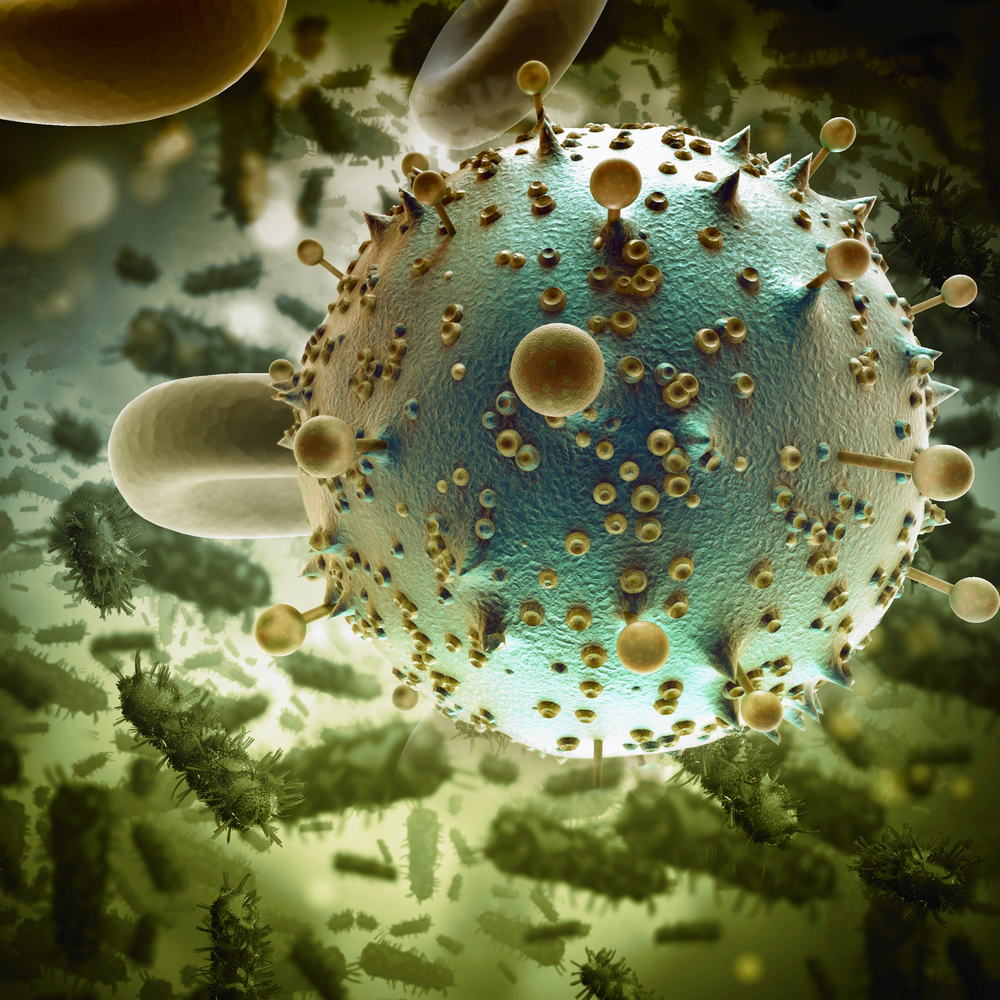
New Molecule Used in Cancer Treatment Shows Promise for Treating HIV
www.discovermagazine.com
A molecule that is currently being used to treat cancerous soft-tissue sarcomas may be the key for developing a cure for HIV.This molecule, known as EBC-46, works by temporarily activating the HIV virus in the affected cells as they hide so that the bodys immune system can remove the virus, according to a study published recently in Science Advances.Its pretty amazing, says Paul Wender, a chemist at Stanford University. In this new agent, we were seeing things that get up to 90 percent reactivation.The Need for TreatmentHIV is a virus that can eventually lead to the deadly condition AIDS. The World Health Organization estimates that nearly 40 million people around the world are infected with HIV.Treatments known as antiretrovirals exist and they stop the HIV virus from replicating, turning it into a manageable condition rather than a life-threatening disease. But these drugs are often expensive, and those with HIV that live in developing countries often cant access them. They are also life-long treatments since antiretrovirals dont fully eradicate the disease.If you ever stop taking therapy, the virus can come roaring back, says Matthew Marsden, a virologist at the University of California, Irvine.Read More: How Close Are We to a Cure for HIV?The Discovery of EBC-46 Wender, Marsden, and others began to look at compounds that might be more effective. They turned to EBC-46, a compound found in its natural form in the seeds of blushwood trees from the rainforests of northeastern Australia.The U.S. Food and Drug Administration had already approved a medication using the compound to treat cancerous soft-tissue sarcomas in humans in 2024, after having an 88 percent success rate in treating tumors in dogs.EBC-46 works to activate the protein kinase C, which in turn prompts the infected cell to come out of latency. Once the cell is out of hiding, the bodys immune system can identify it and begin removing the source of the virus.Once Wender, Marsden, and their colleagues synthesized EBC-46 and began to tinker with it, as described in their study, they created small changes that improved its effectiveness. The compound could kickstart about 90 percent of the cells where HIV was hiding, Wender says.How Does HIV Elude Detection?The trouble with eradication lies in the HIV virus ability to hide. Antiretrovirals may keep the viral load down by stopping HIV from replicating, but some HIV often lies dormant in hidden parts of the body, making it difficult to completely eradicate.The virus can actually hide out in very rare latent cells, Marsden says.Its so good at hiding that the bodys own immune system doesnt detect the devastating intruder, making the treatment of HIV something like a game of whack-a-mole. Just as you knock out some of the infection, more may appear.As a result, Marsden and Wender have been working for more than a decade and a half on ways that they could expose the hiding virus, producing a cure to the disease rather than a lifelong treatment.The approach to a cure would be to get at the source cells, Wender says.Researching Organic CompoundsWender and his colleagues originally synthesized prostratin, which had promise in finding the latent HIV cells in 2008. This compound was isolated from the bark of a tree long used by Samoan traditional healers to treat hepatitis ethnobotanist Paul Cox recorded its use there, bringing the compound to the attention of other researchers.Wender also found promise in a molecule called bryostatin 1. The organic compound came from a marine creature known as the common bugula, but it was so scarce that 14 tons of the creature was needed just to extract 14 grams of bryostatin 1, according to the study published in Science in 2017.The trouble is, bryostatin 1 only activates about 20 percent of the latent cells carrying HIV.How Can a Cancer Drug Help With HIV?Cancer and HIV are different diseases. EBC-46 activates antigens directly on the tumorous tissue to help treat sarcomas. In the case of HIV, EBC-46 activates infected cells, exposing the virus and allowing our antibodies to attack them.We want safe and effective ways to flush out latent virus, Marsden says.In the beginning, EBC-46 could at least interrupt the constant need for antiretroviral treatment. This would be a first step towards complete elimination of the infected cells.Everything in medicine takes time, and its difficult for Wender or Marsden to say how long it will take to develop EBC-46 and bring it to market. Wender says that things like human tolerability, efficacy, and variability in the population still need to be addressed.Nonetheless, we have something that I would consider very exciting, Wender says.Article SourcesOur writers at Discovermagazine.com use peer-reviewed studies and high-quality sources for our articles, and our editors review for scientific accuracy and editorial standards. Review the sources used below for this article:World Health Organization. HIVScience Direct. ProstratinJoshua Rapp Learn is an award-winning D.C.-based science writer. An expat Albertan, he contributes to a number of science publications like National Geographic, The New York Times, The Guardian, New Scientist, Hakai, and others.
0 Comments
·0 Shares
·123 Views


